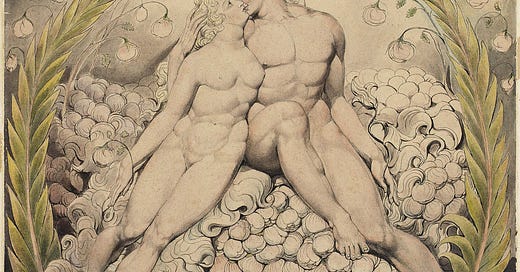To Lie Upon Ophelia's Lap and Eve's Lapsarian Couch
An exploration of the floral symbolism used in John Everett Millais’ 'Ophelia' and John Milton’s 'Paradise Lost'

“He led her, nothing loath; flowers were the couch,
Pansies, and violets, and asphodel,
And hyacinth, earth’s freshest, softest lap.
There they their fill of love and love’s disport
Took largely, of their mutual guilt the seal,
The solace of their sin, till dewy sleep
Oppressed them, wearied with their amorous play.”Paradise Lost, Book IX
In the midst of analyzing John Everett Millais' portrayal of Ophelia's vegetative coffin in 2019, I discovered a similarity between the floral arrangement surrounding Ophelia and the description of Adam and Eve’s nuptial bed in John Milton’s Paradise Lost. John Milton was on the Pre-Raphaelites’ list of immortals and I believe Millais may have immortalized Paradise Lost through Ophelia’s “weedy trophies.” By using the language of flowers, I believe Millais is alluding to the loss of innocence present in Milton’s Edenic fall of man. Regardless if I have mistakenly identified a motif of morality that is not truly there, I subscribe to John Holmes’s argument in Pre-Raphaelites and Science that:





